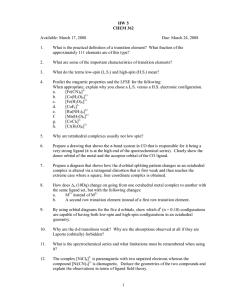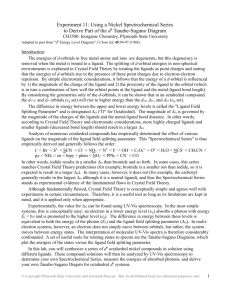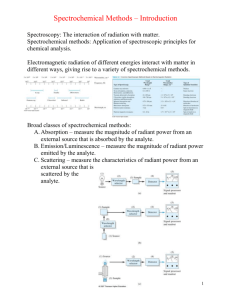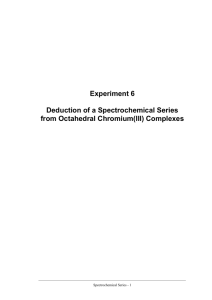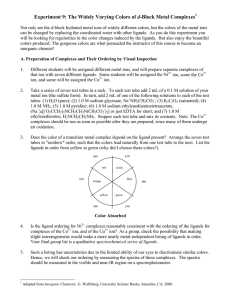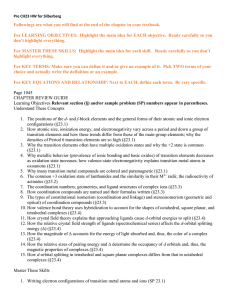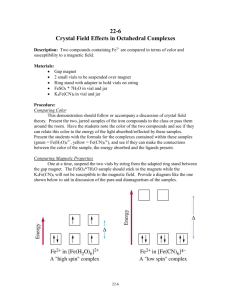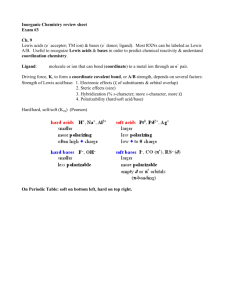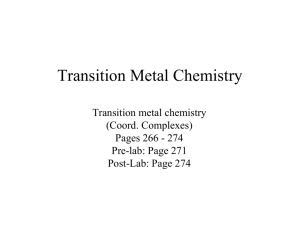Lab 5 info
advertisement
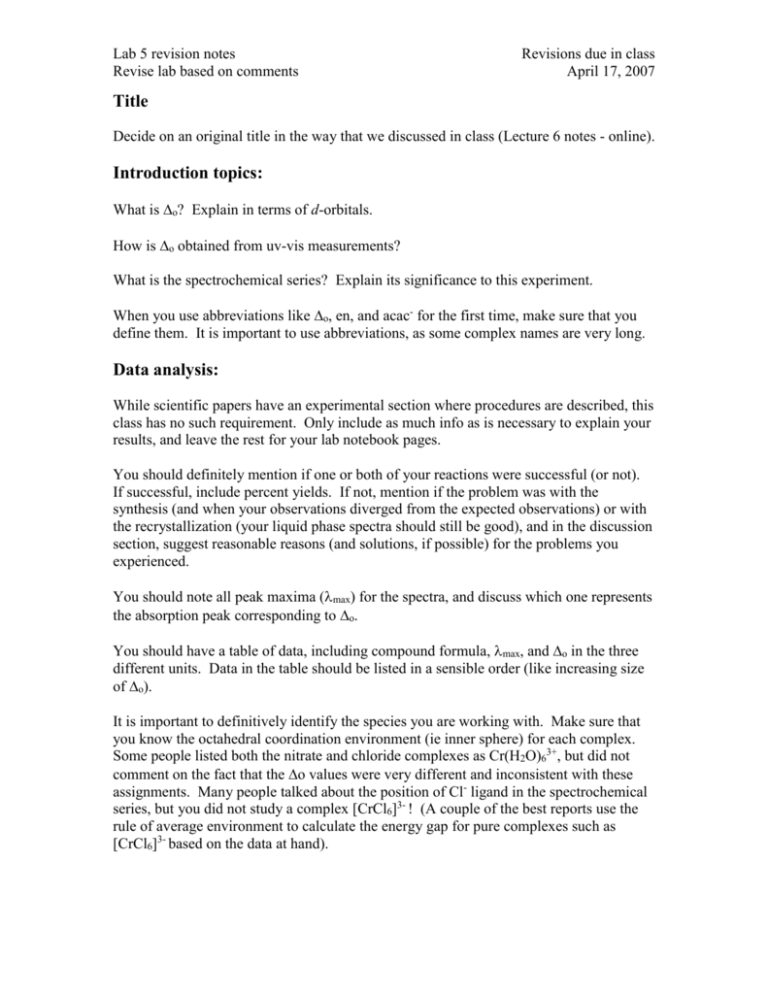
Lab 5 revision notes Revise lab based on comments Revisions due in class April 17, 2007 Title Decide on an original title in the way that we discussed in class (Lecture 6 notes - online). Introduction topics: What is o? Explain in terms of d-orbitals. How is o obtained from uv-vis measurements? What is the spectrochemical series? Explain its significance to this experiment. When you use abbreviations like o, en, and acac- for the first time, make sure that you define them. It is important to use abbreviations, as some complex names are very long. Data analysis: While scientific papers have an experimental section where procedures are described, this class has no such requirement. Only include as much info as is necessary to explain your results, and leave the rest for your lab notebook pages. You should definitely mention if one or both of your reactions were successful (or not). If successful, include percent yields. If not, mention if the problem was with the synthesis (and when your observations diverged from the expected observations) or with the recrystallization (your liquid phase spectra should still be good), and in the discussion section, suggest reasonable reasons (and solutions, if possible) for the problems you experienced. You should note all peak maxima (max) for the spectra, and discuss which one represents the absorption peak corresponding to o. You should have a table of data, including compound formula, max, and o in the three different units. Data in the table should be listed in a sensible order (like increasing size of o). It is important to definitively identify the species you are working with. Make sure that you know the octahedral coordination environment (ie inner sphere) for each complex. Some people listed both the nitrate and chloride complexes as Cr(H2O)63+, but did not comment on the fact that the o values were very different and inconsistent with these assignments. Many people talked about the position of Cl- ligand in the spectrochemical series, but you did not study a complex [CrCl6]3- ! (A couple of the best reports use the rule of average environment to calculate the energy gap for pure complexes such as [CrCl6]3- based on the data at hand). Lab 5 revision notes Revise lab based on comments Revisions due in class April 17, 2007 Discussion section: One part of the discussion should be about scientific concepts You should include the literature order of the spectrochemical series for the ligands in this experiment. You should include your experimentally determined order of the spectrochemical series for the ligands in this experiment. You should discuss where the ligand acac- is expected to fit into the literature series based on chemical similarities with other ligands, and should discuss where it is actually found. The other part of the discussion should be an experimental discussion If your reaction did not work, give your best explanation for why. General notes: Text should be double-spaced, or at the very minimum, written with 1.5 line spacing. Section headings (Introduction, Data Analysis, Discussion) should be on their own line, and should be in bold type. Make sure that you keep the concepts of “Crystal Field Splitting” (a property of the metal d-orbitals) and the “Ligand Field Strength” (result of bonding ability of ligand) separate. The phrase max refers to the maximum of a given absorption peak (thus ALL peaks have a max), not the absorption peak at the highest value of . It is good to be clear about what your primary measured quantity is (max). The derivative quantities you calculate (o in various units) should NOT have more sig figs than the primary measurement. The names of orbitals (s, p, d, t2g, eg) must be italicized. The eg orbitals should not be written as eg*. Don’t be sloppy on subscripts: usages like H2O, eg, and Cr(en)3 are all inappropriate. Do NOT use exponential forms of numbers (4.79e-7) in written reports – you should only use this abbreviation when talking to computers! Write out powers of ten in full instead (4.79 x 10-7).
